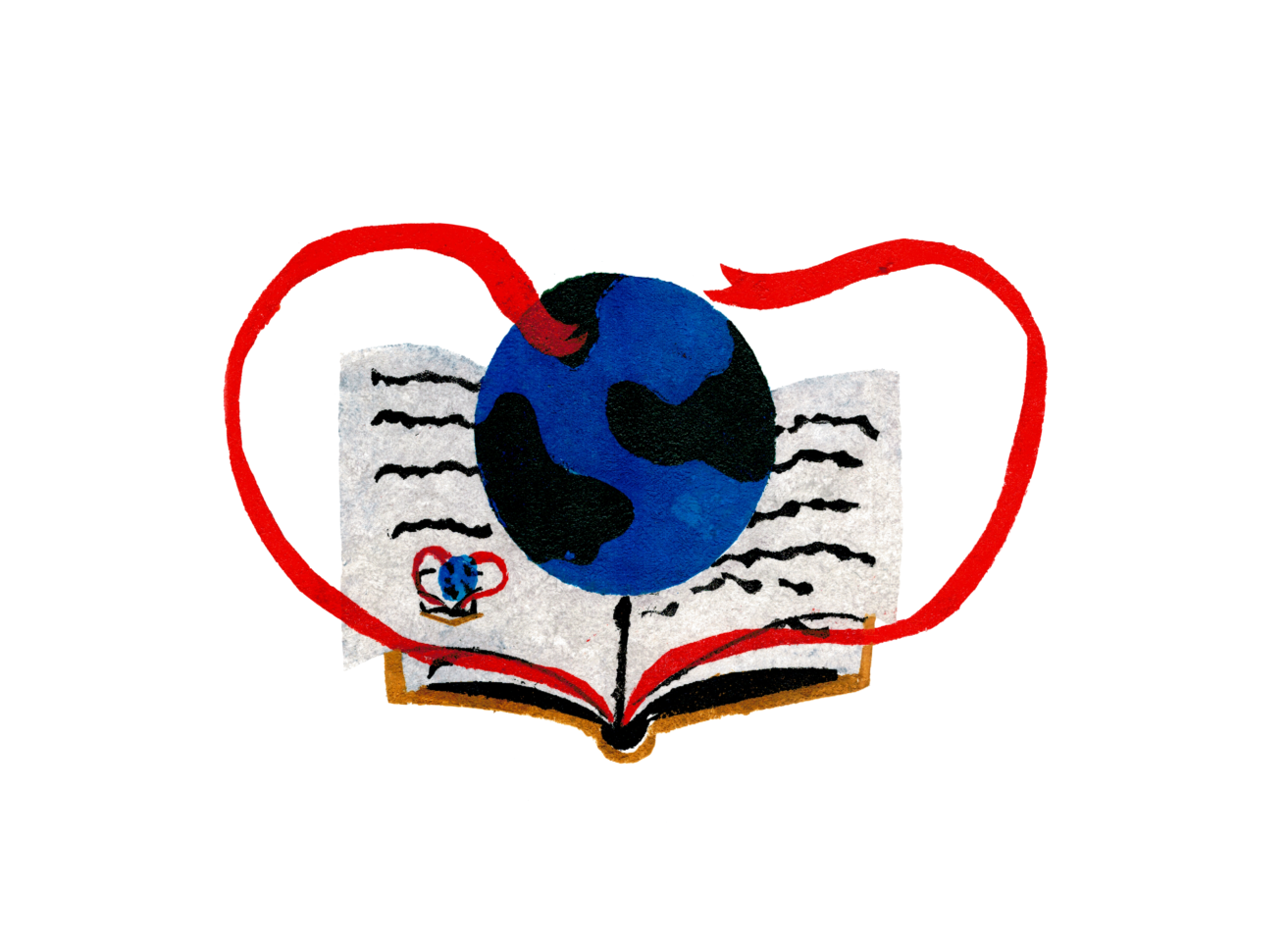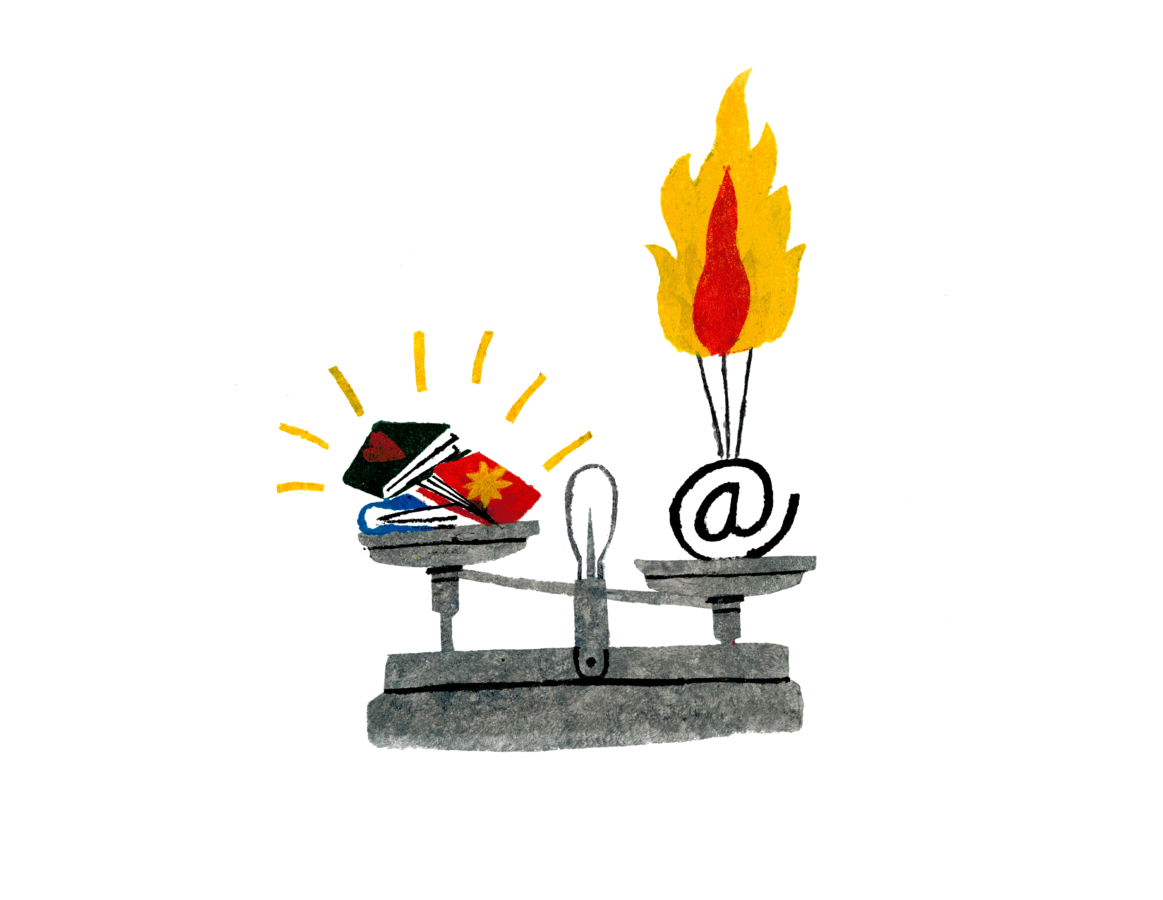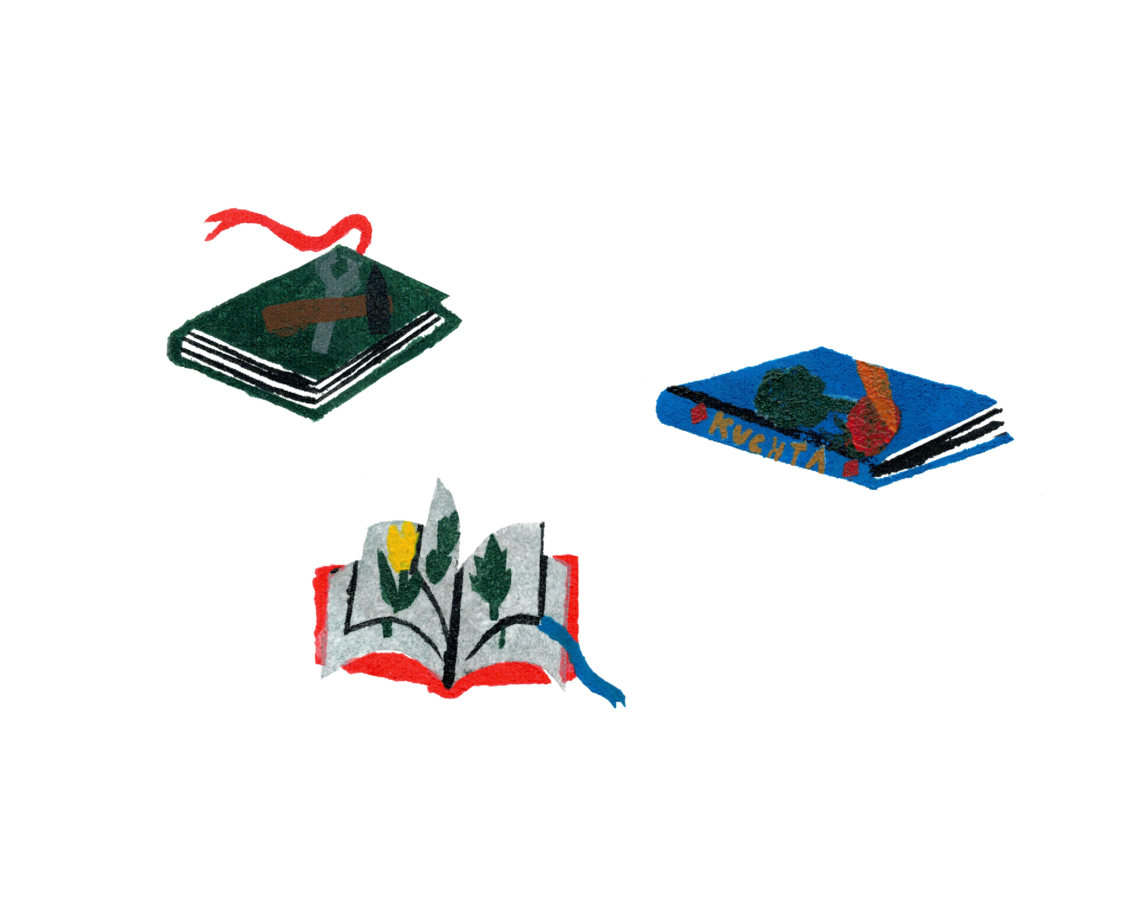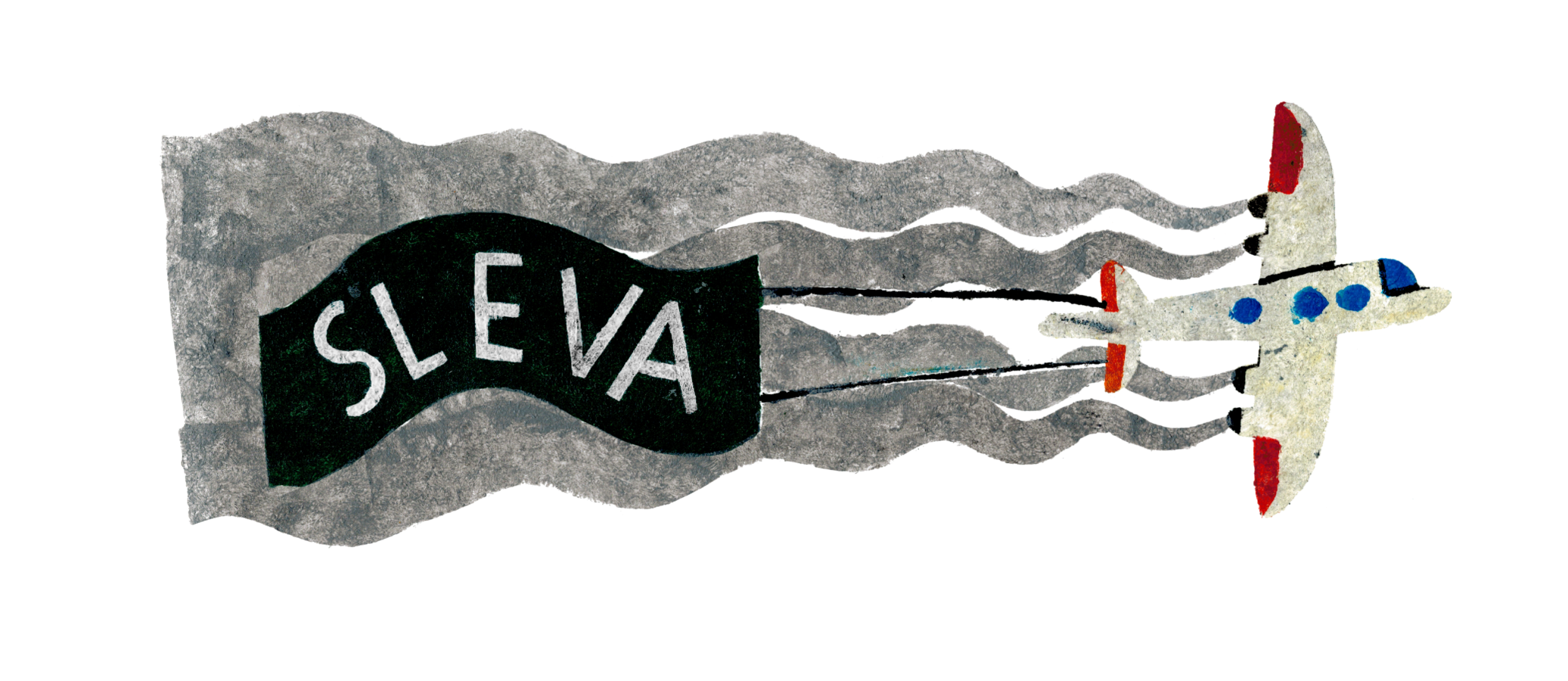Ecology Is Still Disparaged in the Czech Republic Barbora Baronová
When you say “publish books in an environmentally responsible way”, most publishers immediately start brandishing plasticfree publications and paper tape for packaging shipments. However, the topic of ecology within the publishing practice encompasses multiple variables, such as the longevity of books, fair remuneration for authors, material availability, or the sustainability of the publishing practice itself. Moreover, all these aspects need to be seen through the perspective of the country in which the book is produced. The position of the Czech Republic is privileged in this respect if only because we are located in the richer Global North.
Books move in an ecosystem made up of creators, publishers, distribution, shops, libraries, and then readers. Values such as ethics, fair cooperation, solidarity – and not least ecology – are therefore important for the sustainability of such a book ecosystem. These are often overlooked by all involved – often for economic reasons. The pressure to keep the final price of books as low as possible tempts publishers to print in China, on low-quality paper, to produce huge print runs, and eventually to colonise culturally and aesthetically the countries to which the overproduction of books is then diverted. In addition to this, of course, readers want to own the books they desire to read and demand discounts which do nothing more than force book production to behave in an unecological way, disrupting the fragile book ecosystem by not paying someone fairly, all because of the reduced price of the publication. Then we wonder why another independent bookshop closed because it was the only one that didn’t have the funds to provide discounts. Readers came to touch the book, take a picture of it, and then buy it online at the coffee bar around the corner for a cheaper price – at the expense of the bookshop’s margin. The ones who often go unpaid are the content creators. The Status of the Artist could help to dignify their working conditions, among other things, by offering people in the cultural sector a minimum unconditional income, for one example, which would take into account the values they have passed on to society so far. Public libraries could be in a much stronger position in the book ecosystem if they were able to increase the availability of books which could then be produced in smaller quantities. Reduced book production would then, of course, mean less environmental impact on the distribution side. Everything is interconnected in the book ecosystem.
My perspective on the topic of ecology in the practice of publishing was fundamentally changed by a publishing conference in Pamplona, Spain, hosted by the International Alliance of Independent Publishers in the winter of 2021, where I had the opportunity to hear the viewpoints of my publishing colleagues from different parts of the world. It made me realise what a privileged country we live in in terms of the publishing practice – we have countless local printing companies to choose from. We have ecological paper available, and in the case of small publishing houses, we can easily distribute books to shops by tram. We can participate in the many local events available and sell books directly. Not only to end customers, but also to libraries which in the Czech Republic represent one of the densest networks globally. We are growing economically as a country, so in addition to books we can also buy reading devices and audiobooks. On the one hand, this privilege helps to disseminate content in a barrier-free way, but on the other hand, e-books pose a greater environmental burden than paper books.
Unfortunately, there are still many excuses and evasions in the Czech debate on the topic of environmentally friendly book publishing. As a publisher who tries to minimize the impact of her publishing on the planet, I sometimes face hateful comments from readers who do not consider investing in more environmentally friendly book production relevant. In fact, anything ecological is still ridiculed, relativized, and belittled in the Czech Republic. We put each individual satisfaction of needs above our responsibility towards the planet and future generations.
There are two main ways to change our behaviour in the book ecosystem. One is education – that is, informing people about the consequences of our behaviour. The other is critique of the grant policy in culture and its re-setting. The Ministry of Culture should try to take into account the fragility of the book ecosystem and deliberately strengthen, especially, the weakest segments in it. For example, through higher appreciation of the pro-environmental behaviour of individual actors, which strengthens the whole system. The structures of the state have the tools to encourage the different components of the book ecosystem to be more considerate towards the planet. It just requires more flexibility on their part.
Certain regions and institutions can set an example for us in their approaches to ecofriendly book publishing. When I gave a talk at the LiteralPRO festival in Barcelona this May, I asked Laia Figueras Tortras, director of the Catalan ecological book publishing organisation Institut de l’Ecoedició, about publishing ecology.
Q Why is it so important to know the wider context of ecological book publishing?
L F T The Institut de l’Ecoedició, which I represent, has calculated that the carbon footprint of books published in Catalonia in 2019 was approximately 61,000 tonnes of CO2. This amount is more or less equivalent to the carbon footprint of just 19 seconds that all the citizens of Catalonia would spend at once searching on Google. Compared to other industries, this is a rather small environmental impact. Nevertheless, for culture, especially book publishing, environmental impact considerations should become an obligation. Culture is the sum of knowledge, experience, opinions, values, attitudes, and meanings; it is a way of life and communication. A cultural message will lack credibility if we do not care about how we communicate it.
Q When discussing eco-publishing, what participants in the book business do we tend to forget about?
L F T Eco-publishing of books is not possible without the consensus and cooperation of all the sub-actors in the book market. Whether it is book designers, as there are a whole range of decisions that have a significant environmental impact when designing books, such as the use of sequins, gilding, embossing, etc.; printers, as they know the material options at the level of paper and ink; bookbinders, with their experience with adhesives and their detailed knowledge of different bindings; distribution, bookshops, shipping companies – and last but not least, publishers.
Q What is the support for this topic in Catalonia?
L F T In Catalonia, there have been several initiatives from publishers exploring ecofriendly book publishing and promoting local production as a way of looking after the local publishing industry and its environmental impact. Private sector proposals are very important, but eco-publishing can only be popularised with the support of the public administration. In this respect, we are very lucky in Catalonia, because our government understands its responsibility and has proposed a unique and quite ambitious plan to support the cultural sector. It makes it possible, through a series of grants and specialised training, to reduce the environmental impact of those involved. However, eco-publishing is above all a revolution, and it needs strength and faith. It would help if we understood the urgency of sustainable cultural production as well as consumption. In this sense, our readers are not only ready for change, but even demand it. The results of several surveys prove this. The younger the readers are, the more demanding they are when it comes to environmental protection, when it comes to brands and the products they consume.
Q How can people be convinced that they should be interested in the environmental aspect of books?
L F T Readers have a right to know the environmental impact of book production – and publishers have a duty to provide information about it. When we present our publishing philosophy and the purpose for which we publish our books to our readers, we must also inform them about the strategic decisions related to our environmental commitments. This is in order to contribute to a more conscious and sustainable way of consuming culture. With books, we try to minimise our environmental impact not just so we don’t perish, but because such behaviour contributes to a happier way of life. Carbon literacy is another way to effect change. If I talked about the carbon footprint in Catalonia without making comparisons to other things, the number itself would probably have no relevance. The same goes for readers – if we tell them that a book in their hands represents 1,453 grams of CO2, but thanks to the principles of eco-publishing we have saved 235 grams of CO2, it may not be understandable. But when we compare the savings per each copy to, say, the amount of CO2 we produce by keeping twenty-four emails, their perspective and understanding may change. Perhaps in the same way as when we tell them that if we print the same book for the Catalan market in Asia, we might as well multiply its carbon footprint by seven.
Q What are all the things you are able to calculate today?
L F T Our Institute has developed a special calculator (BookDAPer) to measure the environmental impact of books printed both digitally and using offset printing. The impacts that the calculator evaluates are the carbon footprint, the waste generated, as well as the consumption of water, energy, and material. The calculator also shows the environmental savings when compared to the production of books that do not follow ecological principles. The data collected is important not only to be able to communicate the environmental impact of book production. Just knowing the data allows us to reduce them, i.e., to incorporate individual sustainable principles into our decision-making about design, production, distribution of books, etc. Just as an example, the carbon footprint of a 13 × 20 centimetre book with 188 pages, printed locally in Catalonia in a run of 1,100 copies, is equivalent to 948 grams of CO2. By simply changing the size of the book to 10 × 13 cm, the CO2 emissions can be reduced to 491 grams. Whether we eventually do so is only up to us.





